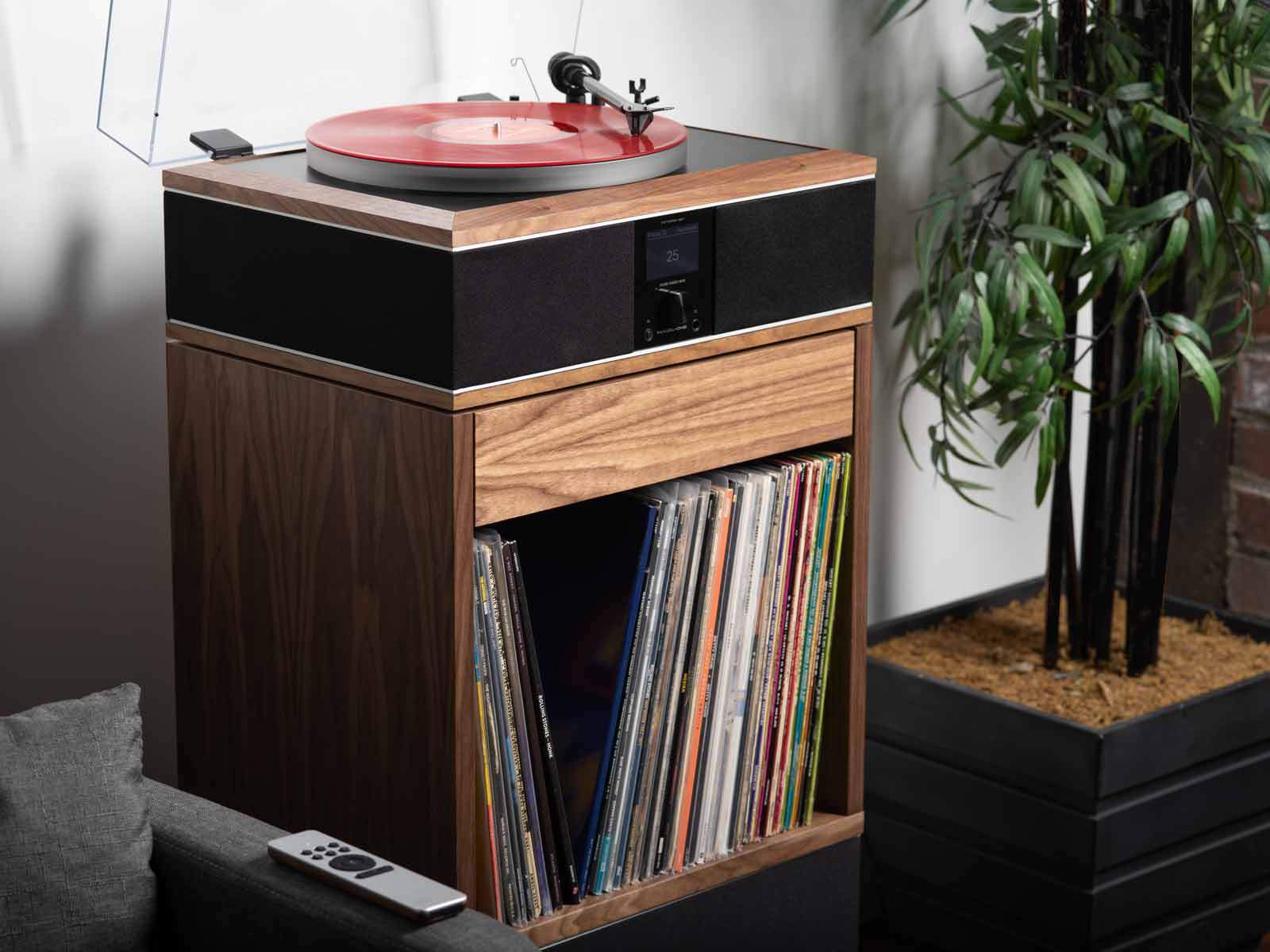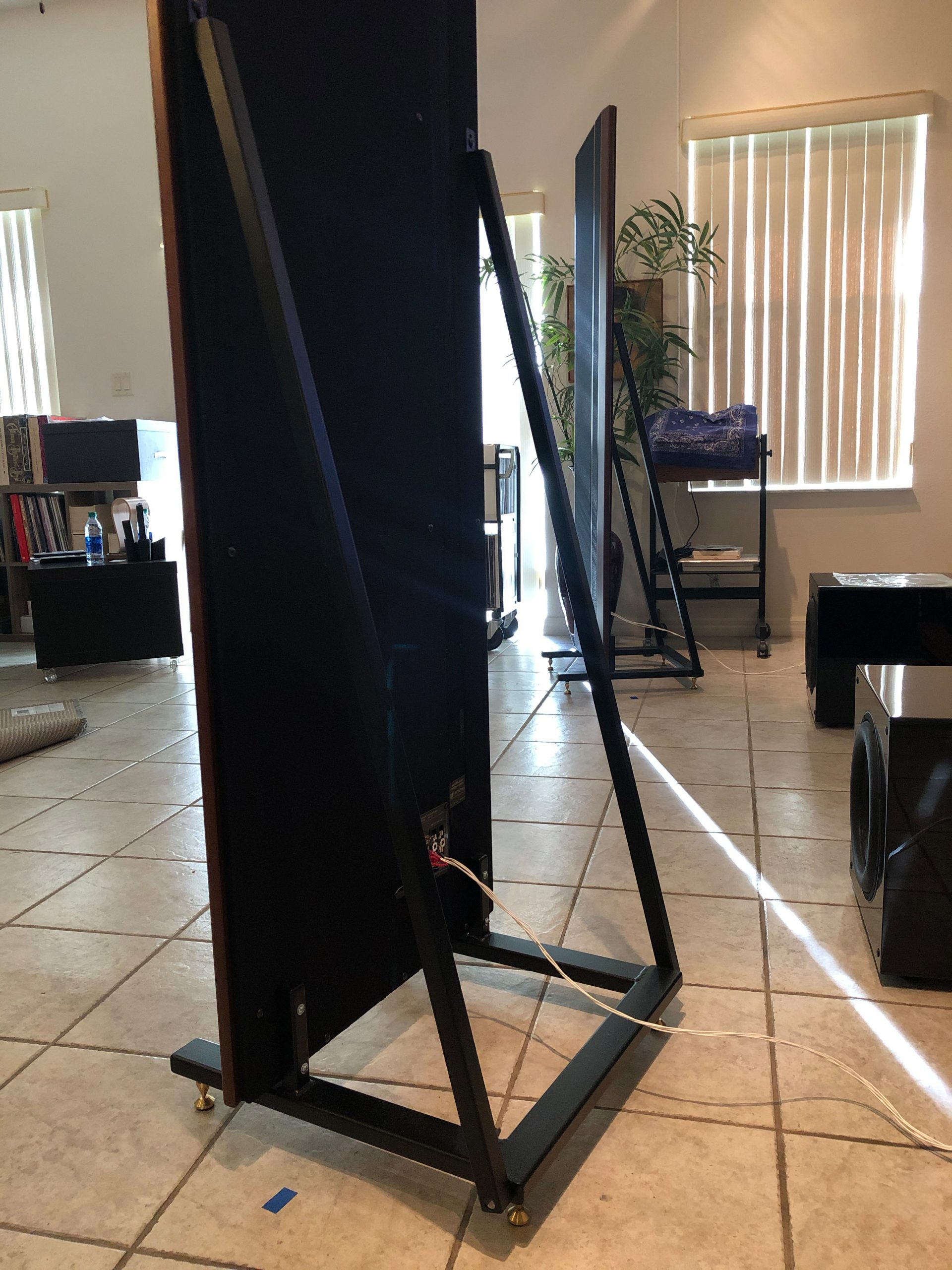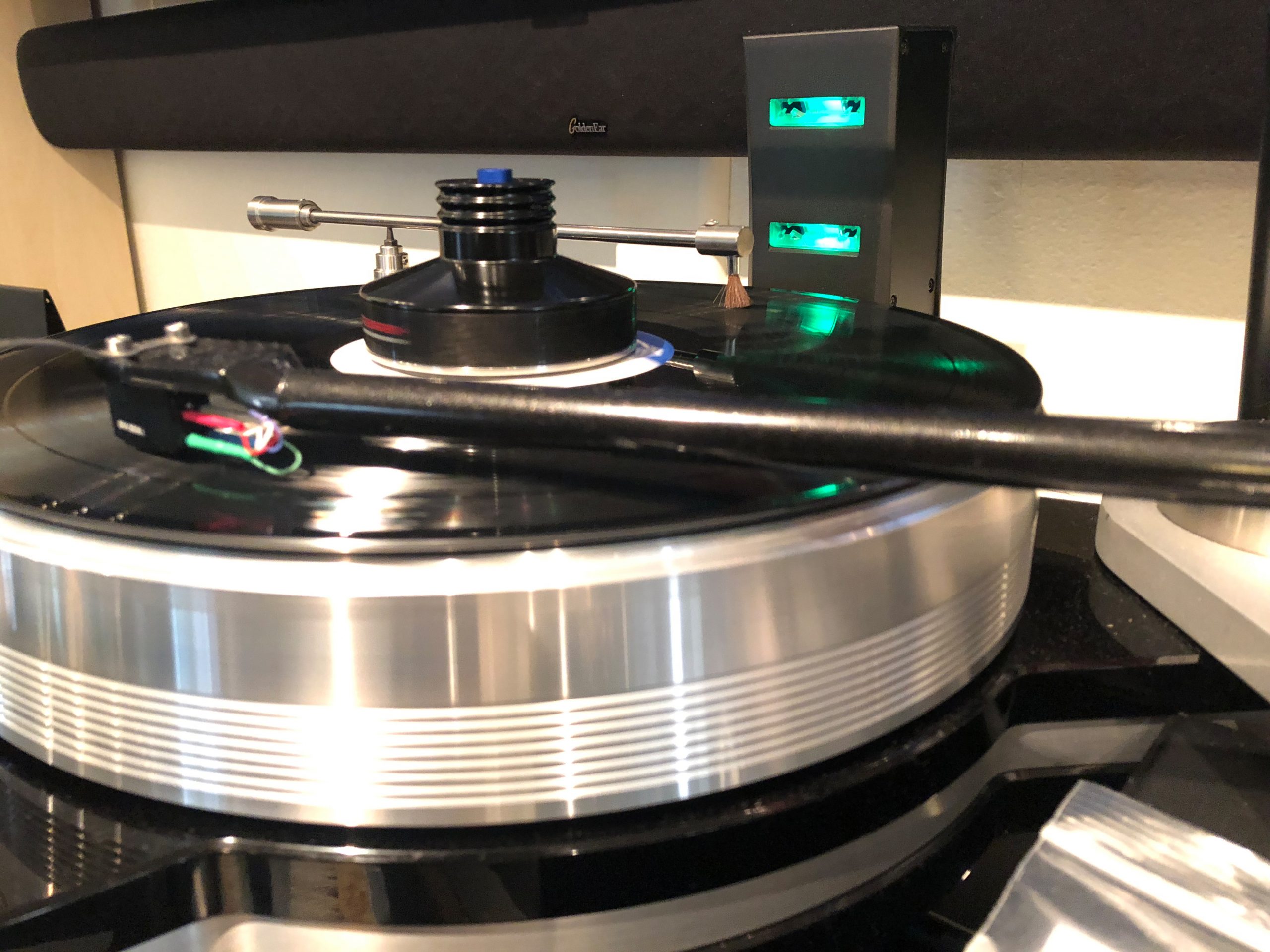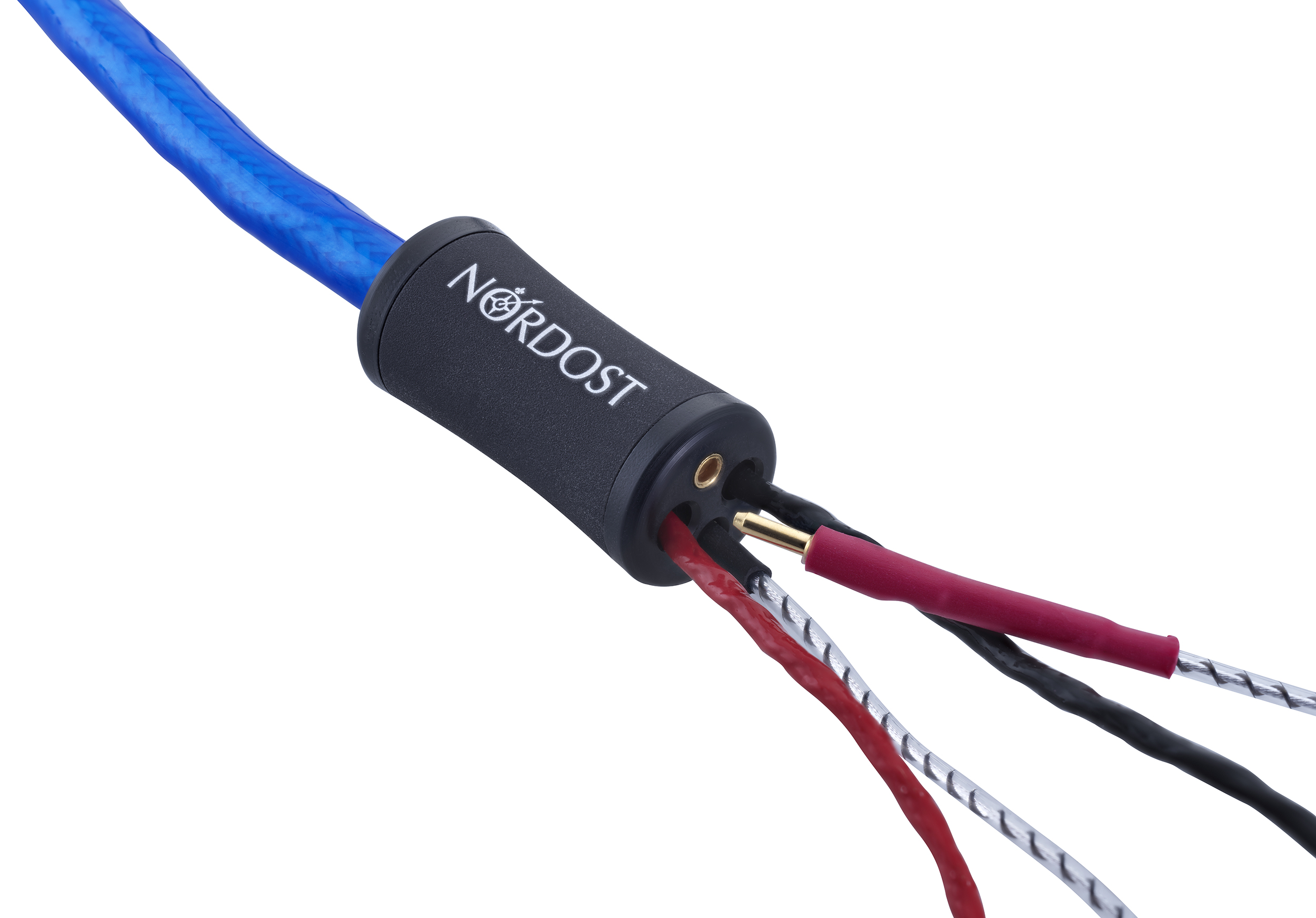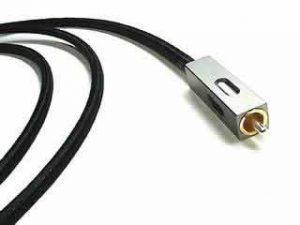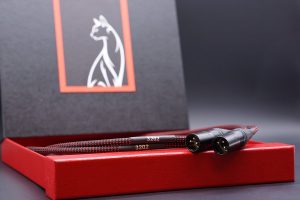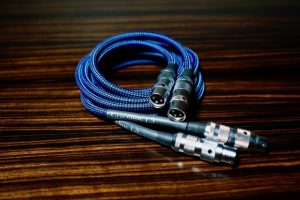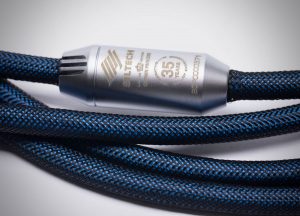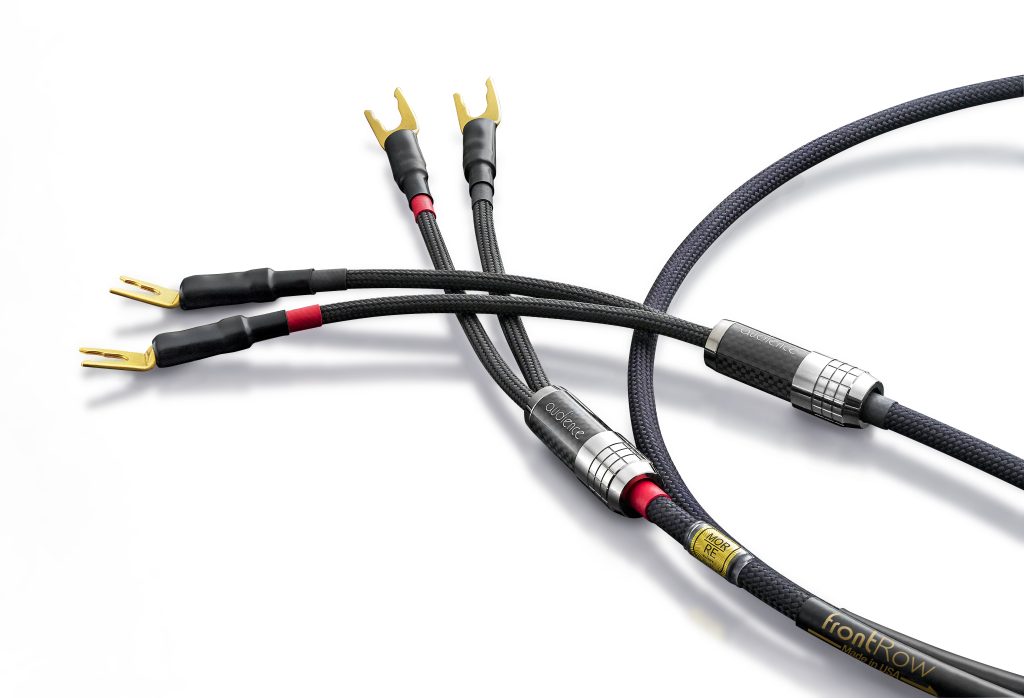
Whenever I write about cables I always feel the need to include a disclaimer as they're such a hot button topic. Especially when it comes to high dollar interconnects such as the Audience frontRow cables reviewed below. What I can tell you from personal experience is that cables matter. There is a clear difference in the sonic characteristics and effect cables create in a system from one manufacturer to another, good, bad or indifferent.
As a general rule Cardas has a warmer house sound, Nordost a brighter presentation, with Anticables and Wireworld falling somewhere in the middle in my experience. I have had all of these cables, and many of their varying product lines in my system at one time or another from individual interconnects to entire looms. I've also tried Audioquest, but they weren't a good fit. In my system they sounded lean, lacking in resolution and veiled. Although to be fair I was only in the middle of their product range, your mileage may vary. Things typically improve as one moves up a manufacturers product line.
All of the above are fine brands whose cables each imparted different sonic characteristics for better or worse in my system. Anticables and Wireworld are both terrific value proposition brands. If you're in the market for quality cables on a budget I'd recommend looking at both. Wireworld Oasis 8 cables received my 2021 Writers Award for best budget cables. They're what I use with my mid-fi bedroom system.
Audience frontRow cables, on the other hand, are in an entirely different league from any other cables I've had in my system. In fact they forced me to throw out and rethink all of my prior assumptions about cables, what they should cost versus the rest of one's system and the impact they can have on overall system performance. Audience frontRow also changed the way I look at cables in another important way. Rather than looking at cables as a means to an end, as disparate individual eliminants used to bridge the gap between more important components, a loom of Audience frontRow behaves much like a component itself. One that dramatically improves overall system performance in one fell swoop. When viewed in this light the investment in these cables makes much more sense to me.
Think about it, my VPI Avenger Plus turntable clocks in around 25k with 2 tonearms, 2 cartridges, a speed controller, and various other accessories. Spatial X3 Speakers 9k, Zesto Eros Mono Amps 22k, Zesto Tessara Phonostage 12k, PS Audio Preamp and DAC 13k. I mention these prices not to be déclassé, but to prove a point regarding the overall investment one can easily have in highly revealing systems. If you're hindering performance with cables that aren't allowing your components to preform at their peak obviously you're not getting the most out of your equipment investment.
Previously I believed a good rule of thumb was budgeting 10% of overall system cost for cables to achieve commensurate results. This is what I followed myself for years, and recommended as ideal when asked. I knew cables made a difference but spending crazy money on cables seemed like a fool's errand. I always viewed cost no object cables with a high degree of skepticism. Skepticism based on zero hands on experience I might add. How much better could they really be? Diminishing returns I assured myself. Is a $3000 interconnect worth the possible extra 2% of sonic benefit I might realize compared to an already pricey $800 interconnect? Doubtful.
Like many of you, my system has grown and evolved in complexity, cost, and sonic capability over time. So too has my understanding and appreciation of high end playback equipment, higher levels of performance, and why in some cases, with some products, you truly do get what you pay for. If I've learned anything, it's that just because a product is expensive it isn't automatically guaranteed to produce better sound. Conversely just because a product falls outside my pricing comfort zone doesn't make it snake oil, ineffective, or a poor return on investment. The same is true at the opposite end of the spectrum. There are value proposition products that preform well above their cost and those that don't. Pricing is a hard thing to quantify. What is considerably easier to asses is performance. Regardless of cost does placing a new component, interconnect, or loom of cables in your system improve it? If so how and how much?
In the case of Audience frontRow the difference was night and day. The fact is, I was wasn't even in the market for new cables or planning any near term cable reviews. I was perfectly comfortable with my mix of Anticables 5.0 interconnects and speaker cables, and Nordost Blue Heaven tonearm cables. Everything was humming along quite nicely and as the saying goes, "if ain't broke don't fix it."
Then my good friend and audio dealer Jeff Harris of Oklahoma based Reference Analog paid us a visit and dropped a set of Audience frontRow speaker cables and a frontRow tonearm cable into my system, and literally blew my mind. I honestly couldn't believe what I was hearing. Same system, just two cables replaced with frontRow, and everything sounded dramatically improved. Thanks a lot Jeff, I should known better than to let you near my system again! Your visits always cost me way too much money.
With just two cables installed, frontRow immediately revealed incredibly elevated amounts of detail, resolution, and bass retrieval, and did so without any of the typical tradeoffs or downside necessary to achieve these results. This is one of the many truly special things about frontRow. Their ability conveys tremendous amounts of detail without ever sounding analytical, aggressive, or harsh is a reality check for this reviewer. The same is true at the bottom end of the frequency spectrum, I heard substantially more bass retrieval, tight and fast, never bloated or fat. frontRow single-handedly disproves the popular audiophile misconception that neutral, highly resolving, detail retrieving cables always equal a brighter, more aggressive top end by default. Not so with frontRow. In fact far from it, with frontRow there is no glare. I stress this point because it really is a unique characteristic. Their presentation is highly resolving yet natural, musical, non-aggressive with beautiful tonality and character across the frequency spectrum. These are definitely what I call "you can have it all" cables.
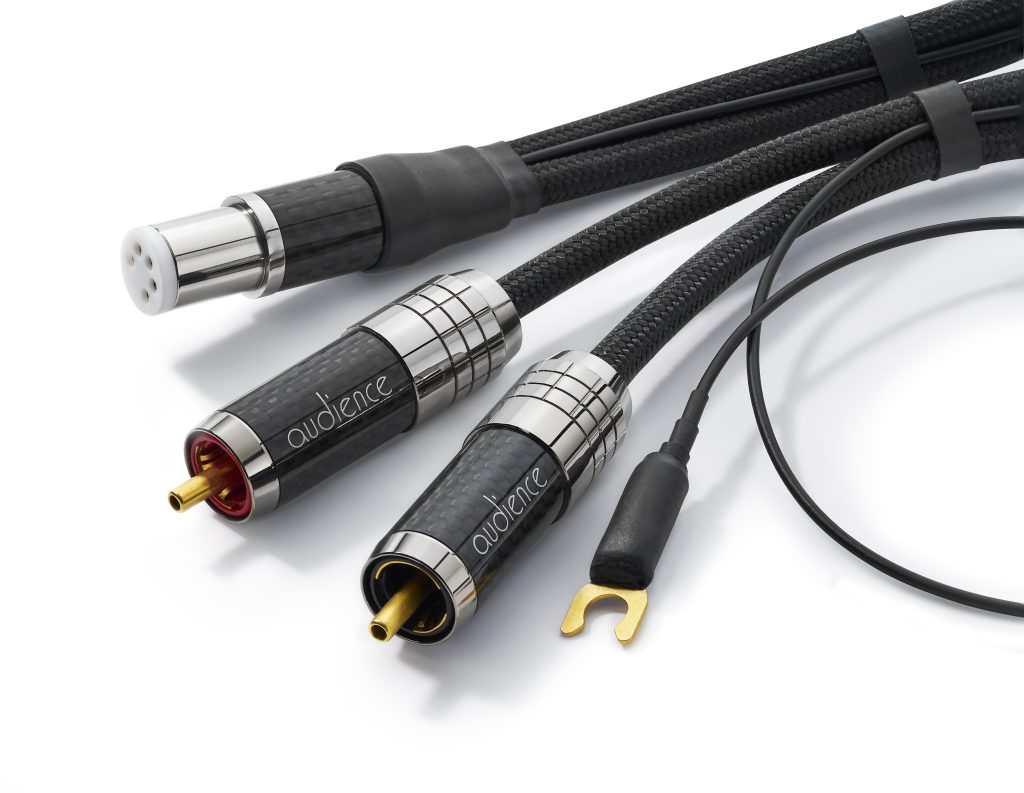
After hearing the overwhelmingly positive impact only two frontRow cables made in my system I decided to reach out to Audience and propose a review. I gave them the option to replicate what Jeff Harris had demonstrated with speaker and tonearm cables, or to send a full loom of frontRow for a more holistic assessment of their impact on my entire system. Happily they opted for the entire loom!
With the full loom installed the improvement wasn't quite as dramatic as it was after installing the first two cables with Jeff, but the sound quality was substantially more cohesive, unified, and a dramatic improvement overall. My system sounded significantly "more," more detailed, more bass response, more revealing, more resolving, more natural, more musical, more! I was now hearing things I'd never heard before in music that I know like the back of my hand.
I wouldn't have believed it unless I heard it myself, but what I discovered with a loom of Audience frontRow installed was that my current cables, as good as they were, were creating a performance bottleneck, preventing the components in the rest of my system's chain from doing their best. In other words, I was holding back a king's ransom of high quality gear with cables. Those of us in the hobby with high end systems seeking improved playback have no problem shelling out tens of thousands for better boxes, but suggest expensive cables and you might just get the sideways eye in a hurry. Honestly I was and am still shocked how much more I'm getting from my system with Audience frontRow.
What Audience frontRow cables do exceedingly well is remove the roadblocks between components, allowing them to deliver their absolute best performance. In my experience, frontRow cables do an exceptional job getting out of the way entirely, passing a pure unadulterated neutral sounding signal from one component to another, creating a presentation that sounds as if in fact there are no cables at all, rather just one unified, holistic system firing on all cylinders. I had no idea how much performance I was leaving on the table prior to Audience frontRow.
These are not the cables to use if you're trying to correct sonic imbalances in your system, essentially using cables like an old school equalizer. Tone control with cables that impart sonic coloration is a fair approach, given that many have warmer or colder characteristics based on their metallurgical compositions and geometry. Although it's important to keep in mind that this fix is a BandAid, which may end up being a bad bet down the road when system changes occur. You may not need that particular coloration correction anymore, which is why I'm an advocate of neutrality.
frontRow are boutique hand assembled cables, purpose built for high end systems, and they do not come cheap. That said, after careful consideration and lots of listening I'm convinced they are some of the best cables available. If you have invested mightily in a system offering state of the art performance I'd argue you're doing yourself a disservice by not trying frontRow. Like I was, you are potentially leaving a lot of system performance on the table. I think you'll be as surprised as I was how much more frontRow gives you. Even replacing two cables in my system with frontRow was enough to clearly demonstrate how they demonstrably improved performance, and brought me that much closer to the music.
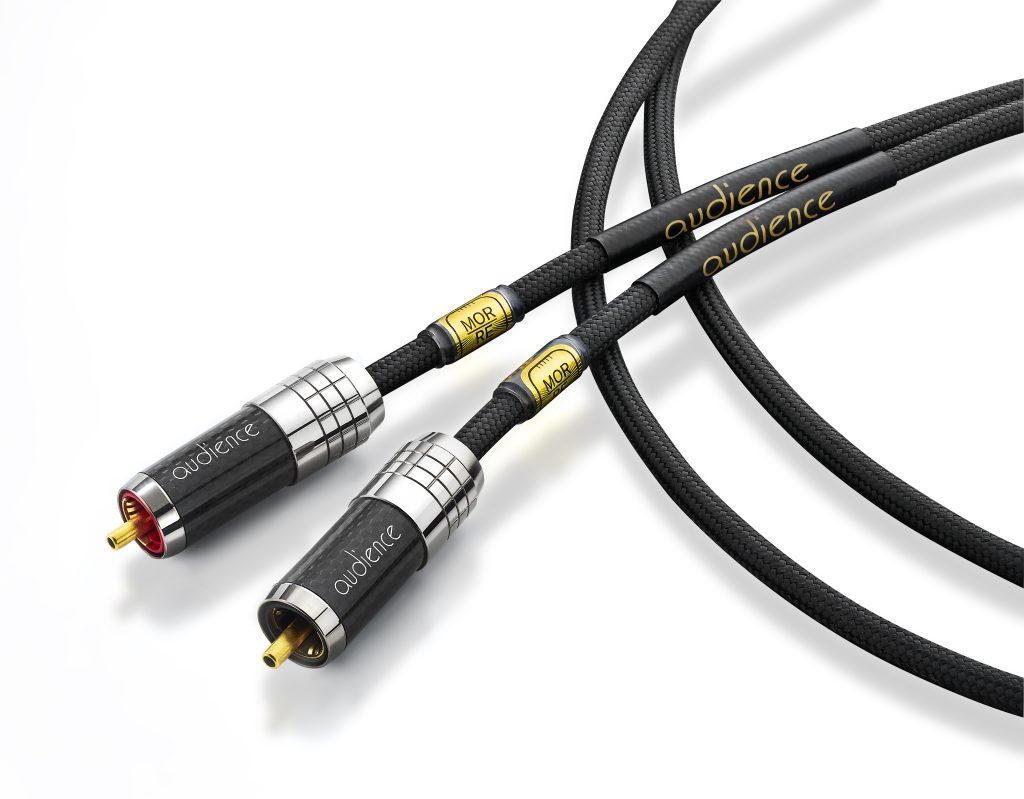
Let's look under the hood at frontRow's material makeup, geometry, and design philosophy. As such, frontRow are lithe, low profile, and easy to work with cables, not your boa constrictor variety.
Their unbalanced interconnects and speaker cables share the same geometry, gauge not withstanding. Audience tells me their cable geometry is very special, proprietary, unique, and something that at its core has been employed from the beginning with updates along the way. Arranged in a helix design, there are two conductors, wires lay flat like a ribbon, not woven like a typical coax cable design. The first conductor is the inner ribbon, which wraps around and around a center core, over that a dielectric, and a second concentric ribbon wrapped in the same manner as the first, except in the opposite direction. That is the basic geometry of these two cables.
The philosophy and purpose of this design is minimization of eddy current resistance, explained below, and EMI rejection. Audience informs their design is unique, with no other manufacturers implementing it in quite the same way. Audience further explains that the process of building frontRow to meet their design specifications is not only difficult, but also involves a considerable amount of waste. This is due to the difficulties involved in assuring consistently high quality in all of the component materials.
What does all this geometry mean to you the listener? In a word, coherency! The double conductor opposing helix configuration results in a very quiet, low noise floor presentation.
To carry its signal, frontRow employs six Nine's (99.9999%) pure OCC ohno continuous cast copper. This is another fascinating part of frontRow's design, as these cables are able to retrieve insane amounts of detail without the use of any silver. Their entirely copper design is one of the reasons these cables have none of the harness typically associated with other highly revealing, detail oriented cables that rely on silver to achieve their results. Audience tells me this magic trick is also due largely to frontRow's geometry. According to Audience, their frontRow cable's natural analog sound comes from the way it implements eddy current resistance. The result is a no signal smearing and a pleasing, natural, coherent signal.
Eddy Currents: Audience frontRow's design is all about minimizing naturally occurring eddy currents. Eddy currents create a time smear in the signal. When you remove that smear you're left with a more coherent signal. This is more evident in the higher frequencies which are particularly susceptible. Although, to be clear, I did also realize a shocking improvement in bass response and clarity. To best understand eddy currents imagine a river and the swirls along its banks, those swirls are the same as eddy currents. They create resistance to the flow of the water. The same thing occurs in an electromagnetic environment. When magnetic energy passes through a conductive material, such as a signal cable, an opposing electrical field is generated. You have the natural magnetic field of the signal, but as that signal passes down a copper wire an opposing magnetic field is generated. This field collapses at a later time domain, this is milliseconds we're talking about, but it collapses back down to the signal resulting in an incoherent, smeared signal.
Audience was good enough to send me a kit that demonstrates the physics of eddy current resistance in action, very illuminating indeed. The kit consists of a non-ferris (no magnetic attraction) copper tube, a steel ball, and a magnet. When the steel ball is dropped into the copper tube it immediately flies through without any interaction between the tube and the ball. However when you drop the magnet provided through the same copper tube, which again has no magnetic attraction, the magnet passes through the tube very slowly, almost as though it's floating. What the heck!? This is eddy currents at work my friends. Seeing is believing, and there's no arguing with physics. What's going on is that even though the copper tube is non-ferris it is conductive, and when an item with a magnet field is dropped through it, it shorts the magnetic field of the tube, creating an opposing magnetic field which creates electrical resistance that slows down the magnet, or in the case of an audio cable, the signal passing through it. The geometry Audience uses for frontRow is all about minimizing this resistance, as well as EMI rejection, thus providing ultimate coherence and a super low noise floor.
Their balanced cables are similar, with a few important distinctions. Comprised of two ribbons side by side, each wound around a core in an opposing direction, and a ground shield wrapped around those two conductors. The important distinction here is that these conductors are not woven like a traditional coax, but rather lay side by side in a ribbon configuration. This is done as this a true balanced design with three conductors.
Audience advises not all dielectric material is created equally, having varying degrees of quality from one source to another. The dielectric used for frontRow is the very finest cross linked polyethylene material available. Audience says that over the years they've learned how to source the best dielectric material.
Most of Audience's frontRow interconnect and cable connectors are proprietary, designed by Audience, and most, save for the balanced cables, are solder free, and instead crimped for a significantly cleaner sonic presentation. The more metal you have the more impurities you have, and the more chances there are for a degradation to the signal. Audience frontRow are also low mass cables, which is also an important part of their design. Audience believes you need enough mass to handle the current, but that anything more than that tends to smear the signal. The added bonus is that owing to their low mass design, frontRow are an absolute pleasure to work with. Gone are the boa constrictor size cables typical of many high end offerings.
Look inside an Audience frontRow RCA cable and you'll notice there's very little metal. The ground is a small tab that isn't solid all the way around, the center pin is hollow, made of tellurium copper, the most conductive material that won't bend. The ground tab, on the other hand, is made of beryllium, the most conductive material that will bend, as you want the ground to have some spring and flex to it. XLR connectors are very low mass, hollow tube, and also made of tellurium on the male side and beryllium on the female side, again for flexibility.
Keep in mind frontRow is Audience's flagship lineup of cables, and one intended for best in class, high end HiFi systems looking to max out performance. I would not recommend frontRow for mid-fi systems. Audience has a complete line of cables for systems of every stripe, starting with their entry level OHNO, followed by Studio Two, Studio One, Au24 SX and frontRow at the top of their range.
Please understand, as with any of my reviews my goal is never to try to convince anyone to make a purchase. Hearing Audience frontRow cables for yourself will do a fine job of that without any help from me. Rather my goal is to convey the impact a product has had in my system, with all the usual caveats in place, i.e.: room size, acoustics, and current combination of electronics. What I do encourage people to do, especially in the case of cables, is to maintain an open mind and simply try them. I did and I can tell you Audience frontRow are here to stay!
frontRow Cables
Retail: Starting at $3300
Audience




